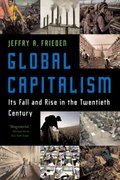Macroeconomics questions
2. In addition to the IS curve derived in question 1a, the Central Bank's monetary policy is designed to target the real interest rate, Rt, around a target inflation rate, Fr: Rt 1'" = rOrt 1T) wherein1 = 0.6 and it = 3 a) Derive the aggregate demand function, AD: the GDP gap as function of inflation at. b) Due to a recession, assume a drop in investment from ii = 0.3 to if = 0.2. What happens to the aggregate demand? 3. Assume the aggregate supply curve for the economy described in questions 1 and 2 has the following function: at = n? + 1717': + o where 1:? = nt_1 = 3 17 = 0.4- and o = 0 a) What happens to the GDP gap and inflation with the recession described in question 2b (from if = 0.3 to i' = 0.2)? b) What happens to the GDP gap and inflation in the following period? c) Assume instead that of = 1?, what happens with the same shock to investment in the immediate period and in the following period? d) Describe the different Central Banks interest rate target, Rt, given the two different assumptions for ination expectations, nf, described in part a and in part c. 4. Suppose a country with GDP equal to Y1; = $2 trillion has a level of national debt equal to Bt = $3 trillion. The nominal interest rate it pays equals to i = 2% and GDP grows yearly at g = 1%. a) If the government keeps a primary budget in balance (T = G) what is the growth rate of its debt, B? What is the growth rate of its debt-toG DP ratio, B/Y? b) If the government keeps its total budget in balance (primary budget plus interest payments on debt), what is the growth rate of its debt? What is the growth rate of debt- toG D P, B/ Y? c) Are the trend in described in part a and b sustainable? Explain. 5. Suppose there is a positive shock to the US economy that makes foreign investors increase their demand for US assets. a) Using the AS/AD framework, explain what happens to the exchange rate, to net exports, and to aggregate demand. b) What would happen to inflation? Will it increase or decrease via a cost-push or demandpull effect? c) What do you think would happen to the nominal interest rate and investments? Assess the long run effects compared to the short run impact you described in part a. 1. Consider an economy with the following functions: Yr: Ct+ It+ Gt+ NX: Ct = (1617; where is = 0.5 and 17} is the longrun trend potential output I, = 51,17; Baa, r) where a,- = 0.3, r = 3 and E = 0.4 G: = (1917,: where is = 0.2 NXt = EMF} where flux = 0 a) Derive the IS curve as the GDP gap, 17}, as a function of the real interest rate, Rt, where ~ Y: Y: = . Y: b) What is the real interest rate at which current output, if}, is equal to the longrun potential output? c) According to Ricardian equivalence, what is the impact of a temporary increase in government spending ( g rises for one period)? Assume the extra spending is nanced by government borrowing. Explain what happens to consumption today and in the following periods, and why











